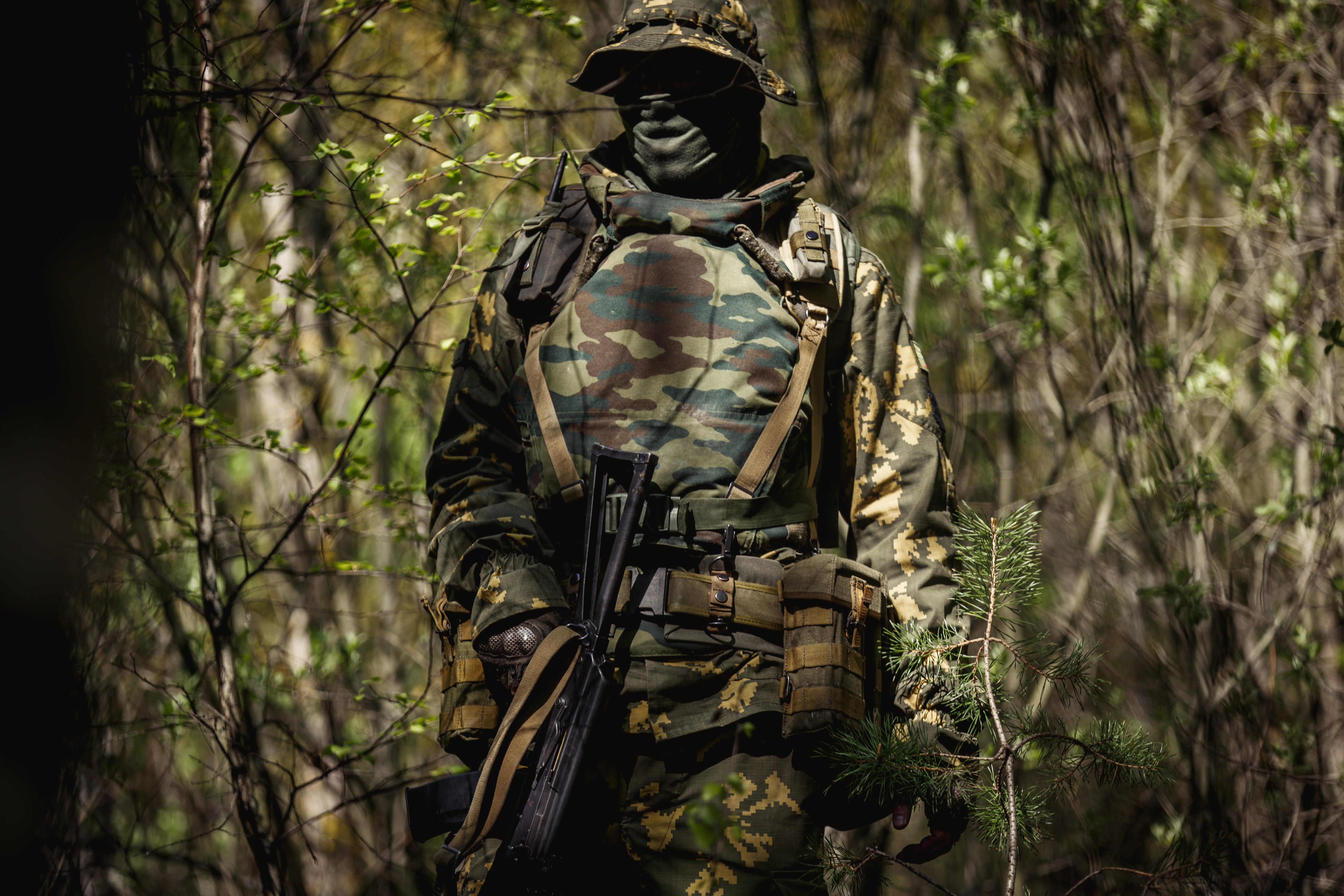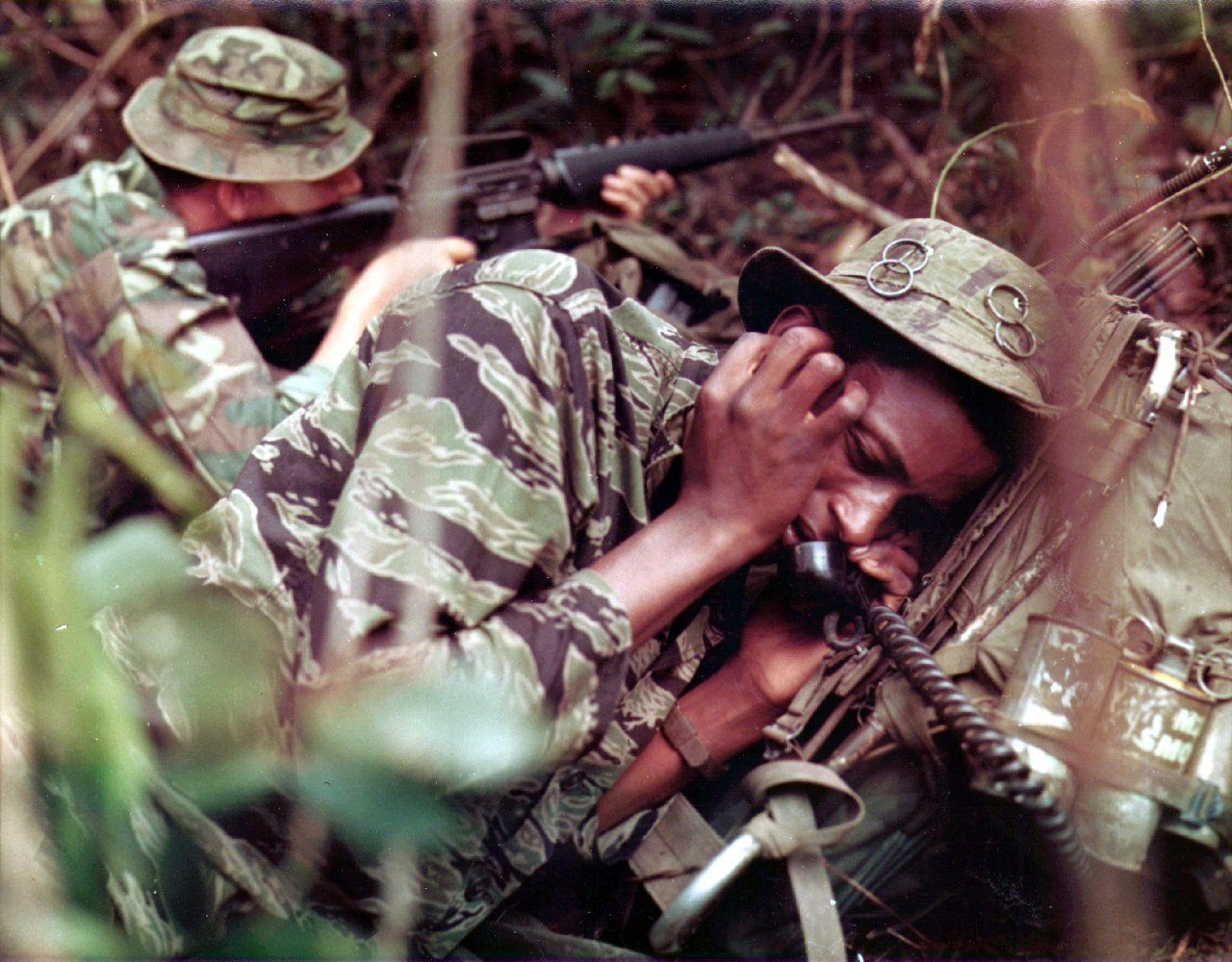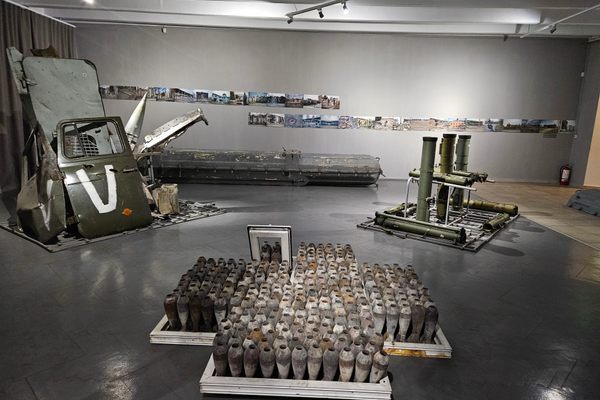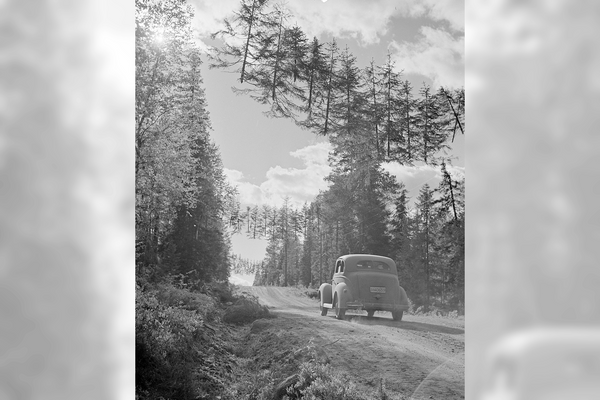A Country’s Identity Is Hidden in Its Camouflage
A unique online resource shows how camo can make a soldier stand out.

In the animal kingdom, adaptation to one’s surroundings is a matter of survival. Take the ever-changing chameleon. These lizards are widely known for their ability to shift the color and pattern of their skin. In some cases this makes them less detectable to predators, but one of its primary purposes is as a social signal, a form of nonverbal communication between reptiles.
Naturally, humans have developed the same strategies. All around the world, military personnel don camouflage to, well, disappear. The advantage is obvious: A blur of brown and green is easily overlooked as a target, particularly against the backdrop of a lush jungle. Yet much like the chameleon, camouflage patterns have evolved into more than just a method of concealment.
Upon clicking and scrolling through Camopedia, an ever-growing online catalogue of camouflage patterns used by militaries around the world, the impact of regionalism on field uniform design becomes apparent. The database is vetted by both historians and camouflage enthusiasts alike to be an accurate reflection of what a soldier from a given part of the world will be wearing. In addition to various varieties of green, India’s offerings include a noticeably gendered magenta for women and blue for some male police personnel. The British Army’s “brushstroke” design could be as artistic as it is tactically successful. Over time, camouflage patterns have become as much about identifying nationhood—standing out—as they are about blending in.

Though India’s unsubtle variations are considered rare, they illustrate how camouflage isn’t just about hiding in battle. “When the average person thinks of camouflage, they think of something that’s put on to disappear,” says Eric Larson, Camopedia’s executive editor. “But camoflauge has actually become, for a lot of these countries, more of a national identifier.”
Larson has collected camouflage for 25 years, meaning he has been “picking up as many different uniforms from around the world as I could,” he says. His personal collection boasts more than 2,500 individual items. He started Camopedia because there were few resources available to help people identify the patterns, when they appear in photos or video, for example.
World War I is thought of as the dawn of modern camouflage’s military application. “[It was] the conflict where people started experimenting with collecting data and intelligence without being seen,” Larson says. In the following years, the art of camouflage gained momentum, and the patterns evolved to match the environments in which battles would be fought. The 1960s, professional camouflage designers began to apply science and optics to the development of new patterns. “Speaking from my knowledge of U.S. development, our participation in Southeast Asia was something that helped [camouflage design] grow into more of a scientific field,” Larson says. “So some of the native Vietnamese tiger-stripe patterns [were brought into use by Americans] … those were very effective in these new jungles because it’s dark, there’s a lot of shadows.”

Along with navigating by nation, users can search Camopedia by “families” of patterns, which group them based on the geographical region or ecological setting they were designed for. The aforementioned tiger-stripe pattern from the Vietnam War is one example. Bespeckled “chocolate chip” desert camouflage is another. “Obviously there was a lot of turmoil in the Middle East desert region in the ‘70s, and I know that that’s one reason why the United States started to create desert patterns,” Larson explains. “They thought, ‘Well we’re going to be involved at some point over there, so we can’t wear green camouflage.’” Even as camouflage was better designed for its military purpose, it grew into its a dual role as a way to identify soldiers and their home nations, regardless of where in the world they are.
Warren Riley, a retired Master Sergeant for the U.S. Air Force, used camouflage designs in exactly this way during his active years of duty. “When I was in service and was based in several different countries, [other countries’] uniforms were very different from ours,” Riley says, listing attributes of the outfits of soldiers from Switzerland, Russia, and then-Yugoslavia as being the most “out there.” As an active service member, he was deploying regularly and being exposed to new places and thus new patterns. He found a knowledge of the patterns helpful, particularly as a safety precaution. “[You’d] look for certain things no matter where you were … you start looking for a certain uniform,” he says. “When you’re in that environment, it definitely was a way to identify a friendly person [versus] an enemy.”

For journalists reporting on military conflicts, Camopedia is a useful resource to help verify the identities of soldiers, and to provide accurate information to the public. Samuel B. Thielman Jr., of the Tow Center for Digital Journalism at Columba University*, says, “So much of the work around information we see on the internet, especially video and photo, is reconstruction,” so relying on Camopedia to provide context for uniforms seen in different forms of media helps reporters fact-check more thoroughly. “People who are involved in conflict mistake or mislabel photographs of soldiers performing their duties,” Thielman says, but “if you use something like Camopedia, you can see that the pattern on the soldier’s uniform was, in fact, an Arab Egyptian soldier,” rather than a soldier from a different country or unit, for example. The media landscape has undoubtedly changed over the years, and in today’s world of fast-traveling content, journalists and politicians need to be able to properly and efficiently deduce who’s who in videos from conflict zones. “There’s a really interesting sub-industry of journalists parsing photos for information about time and location,” Thielman says. “It’s a very different world we report in now.”
Through a series of clicks, Camopedia makes this evident. The curated encyclopedia is also a living document, and open to contributions from users. This is critical given how often military uniforms change. Riley, who retired in 2006, says that the U.S. Air Force uniform alone has gone through “probably two or three iterations” since he wore it.
Camopedia’s status as a definitive resource on camouflage identification is well deserved. It offers information on how different countries approach military tactics and national pride. For instance, Canada’s CADPAT digital pattern is “camouflage that uses computer algorithms to assist in designing patterns that are going to be able to fool the human eye to the greatest degree of effectiveness,” says Larson, while India’s colorful options invoke identification and hierarchy. Today, camouflage uniforms can be understood as both invisibility cloaks and wearable flags.
* Correction: An earlier version of this story stated that Samuel B. Thielman Jr. works for Columbia Journalism Review. He actually works for the Tow Center for Digital Journalism at Columba University.














Follow us on Twitter to get the latest on the world's hidden wonders.
Like us on Facebook to get the latest on the world's hidden wonders.
Follow us on Twitter Like us on Facebook